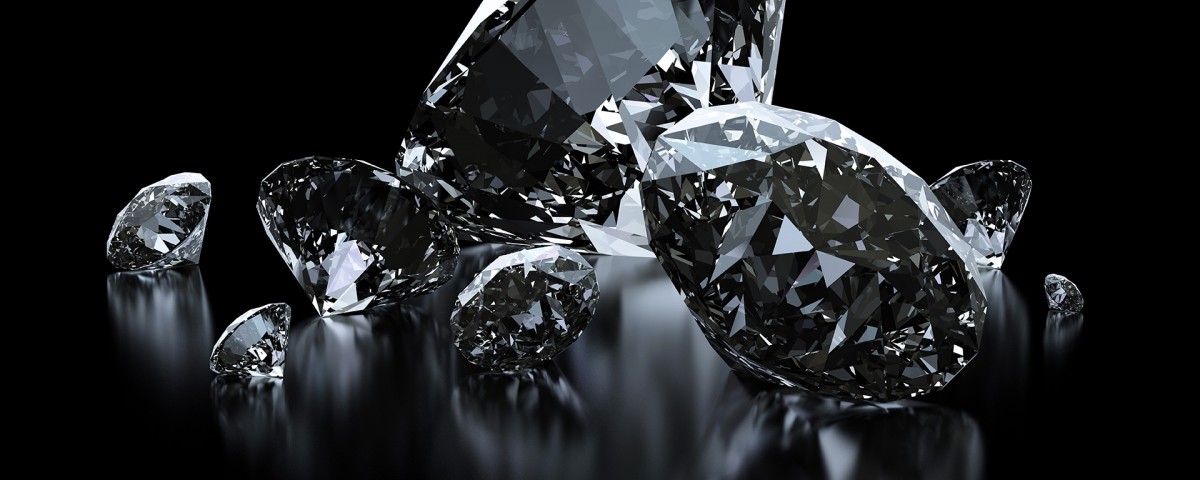
A Sparkling Review Of The Top Diamond Moments in 2016
January 25, 2017
Beware of Cheap Engagement Rings and Diamonds
April 15, 2017Telling the Difference Between a Cubic Zirconia and a Real Diamond

This page contains references to diamonds or engagement rings from different companies. Sometimes I do receive a commission when you click on links and buy the products.
Diamonds are loved around the world for their elegance, their style, and ‘wow factor’. Diamonds and diamond products make for great gifts and brilliant collections. As you know from our website, diamonds can come in all kinds of shapes, sizes, cuts, colors and clarities.
With all these varying options comes a different price and a different finish. One other factor that you might consider when looking at price are simulation diamonds, with the newest version being known as Synthetic Cubic Zirconia, or just CZ.
These, of course, won’t be as naturally beautiful, but will make diamonds more accessible to a wider audience. However, for those wanting to purchase real diamonds, or for those who want to be on the lookout to make sure that their diamond is real, below we’ve laid out a guide showing you how you can tell the difference between a simulation diamond and a real diamond.
What is a CZ or Cubic Zirconia diamond?
They first hit the market in the late 1970s and were initially expensive, although still posed a cheaper alternative to real diamonds.

However, as they became more widely produced, prices rapidly dropped, and now you can pick up CZ diamonds for a relatively cheap price. You can often see CZ diamonds being used for costume jewelry with diamante patterns.
They look extremely similar to real diamonds, but there are ways to tell the difference between the two.
Tests that you can use to tell a CZ from a Real Diamond
If you want to test if your diamond is CZ or real, you can use these simple methods:
Weight test
If you have a loose diamond, then you can perform a weight test on it. A CZ diamond will weigh roughly 1.7 times more than a real diamond of the same dimension.
Fog test
You can breathe on your diamond to perform a fog test. A CZ diamond will remain foggy for several seconds, while this will dissipate on a real diamond almost instantly. The reason for this is that a real diamond has a greater level of thermal conductivity than a CZ diamond.
Newsprint test
You’ll also need a loose diamond in order to be able to perform this test. Simply lay your stone upside down on the page of a newspaper or magazine. If you can see some parts of the text beneath, then your “diamond” is potentially a CZ. If you can’t distinctly make out the letters, it means your diamond is real.
This is because a real diamond has a higher level of refractivity, meaning that it bends light much more than a CZ.
Metal indication
If the metal of your product is a base metal, silver or gold plated, then it is highly unlikely that the diamond itself is real. Stamps such as 14K, 18K or PLAT would indicate that a precious metal has been used, meaning it is more likely that a real diamond is contained within. This is not a definitive test, but merely provides a good indication.
Color
If your stone is completely colorless, even under magnification, then it is most likely not a real diamond. Again, this test isn’t definitive as some real diamonds are colorless, but this could provide you with a good indication.
Abrasions
Place your stone under magnification, and if you notice any slightly rounded facet junctions or clear abrasions, then your stone is unlikely to be real. Real diamonds have extremely precise faceted edges and rarely have heavy abrasions or scratches.
Talk to the Experts
If you still aren’t sure after performing some of the above tests or you would rather an expert does it, take your stone down to a reputable jeweler. They’ll be able to quickly identify for you whether a stone is CZ or a real diamond.
For more information on telling a real diamond from a fake diamond, take a look at this video:
The Difference Between CZ and Synthetics
To make matters ever so slightly more confusing, although a CZ’s full name is Synthetic Cubic Zirconia, it’s a simulation diamond, not a synthetic diamond. Simulation diamonds look like real diamonds, but are much cheaper.
Synthetics, however, are man-made, and possess almost exactly the same chemical, physical and optical properties that you will see in a real diamond.
The Bottom Line
If you can’t afford a real diamond, then a CZ diamond is a perfectly acceptable route to go down. While there can be arguments against the cheaper production and value of these diamonds, it is simply down to the consumer which route they want to take. Simulation diamonds may also contain color, which you may prefer in your diamond.
However, if you are after elegance, beauty and shine, then we would always recommend going with the real thing. A diamond’s brilliance and sparkle can’t be matched, and diamond products are usually products for life. So while they may incur a greater fee at the beginning, they will provide you with value for many years to come.


